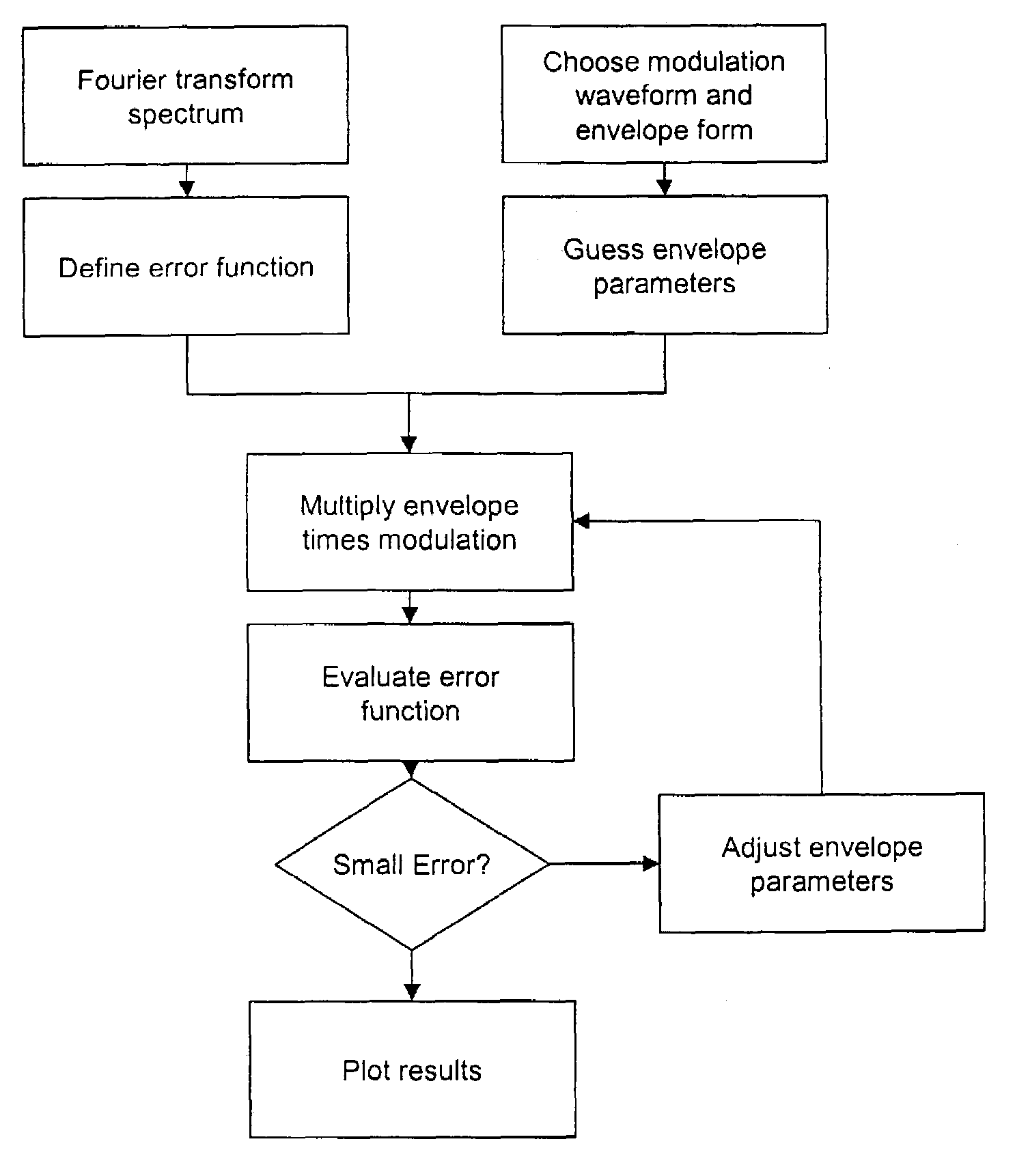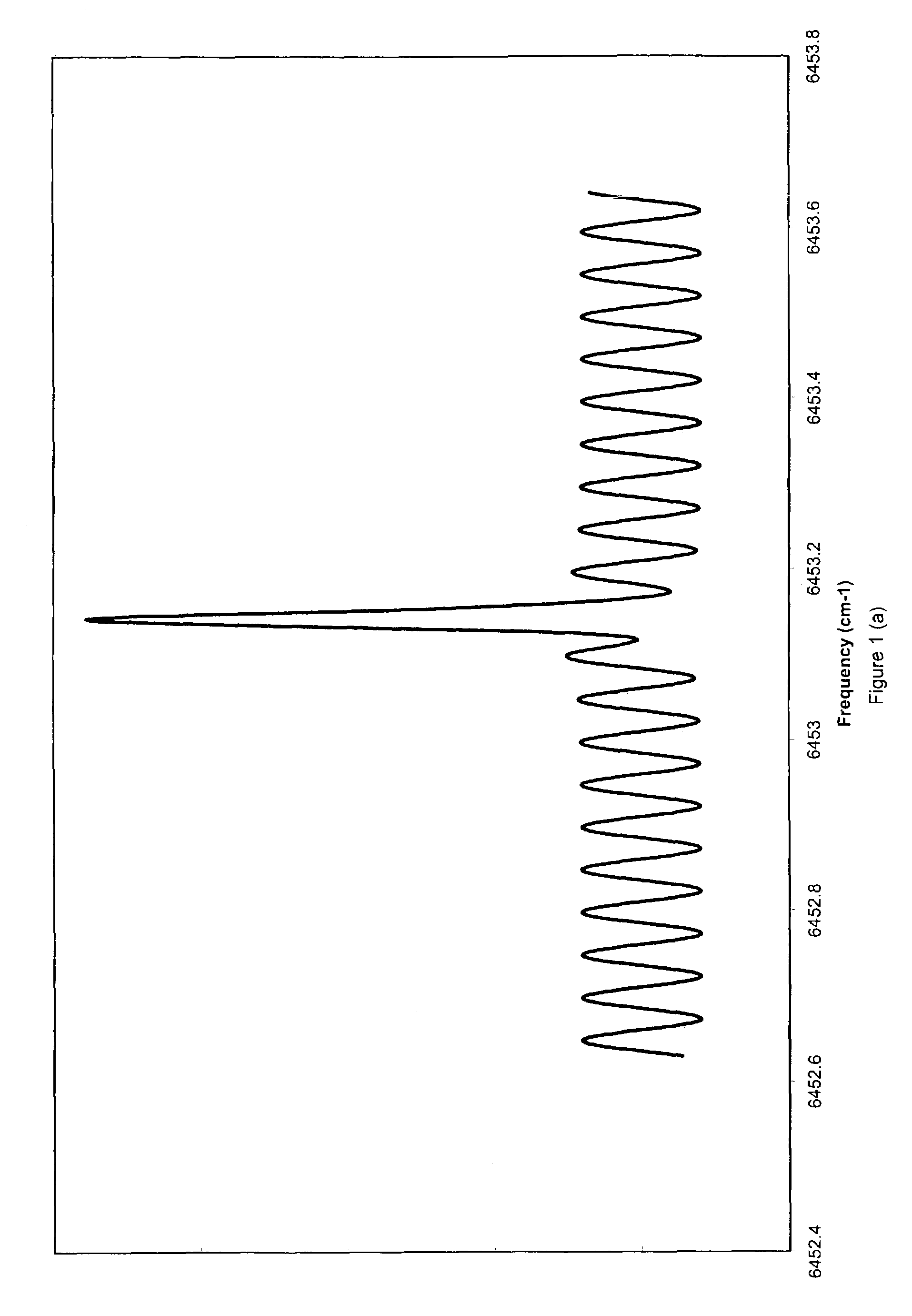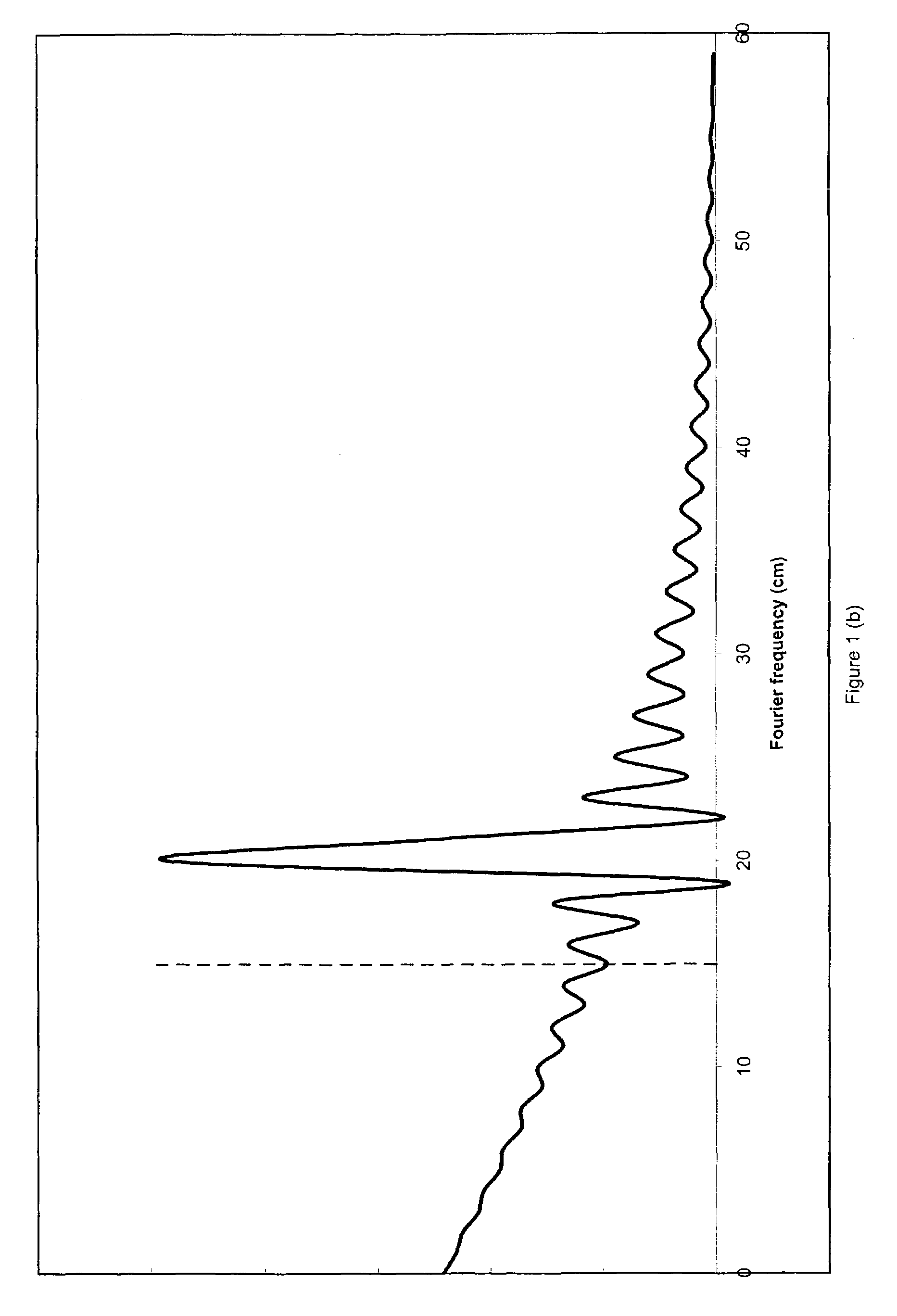Envelope functions for modulation spectroscopy
a modulation spectroscopy and envelope function technology, applied in the field ofspectroscopy, can solve the problems of inconvenient use, incurring the cost of an actuator, limited sensitivity, etc., and achieve the effect of allowing sensitive detection
- Summary
- Abstract
- Description
- Claims
- Application Information
AI Technical Summary
Benefits of technology
Problems solved by technology
Method used
Image
Examples
Embodiment Construction
)
[0026]The present invention is an apparatus for and a method of preferentially detecting only those Fourier components of a spectrum that convey the most information. It employs a modulation circuit, a light source whose wavelength or frequency can be modulated, a sample path, a photodetector, and a demodulator. The modulation circuit produces a waveform, such as a sine wave or triangle wave, multiplied by an envelope function. The invention also comprises a method of modulating the light source of a spectrometer in a way to optimize the detection of certain Fourier components of a spectrum under investigation. The modulation waveform is multiplied by an adjustable envelope function. The lock-in amplifier time constant is set to be longer than the characteristic period of the envelope function. The envelope function is adjusted to give the desired performance through an optimization algorithm.
[0027]The advantages of the present invention can be obtained with any spectrometer that c...
PUM
| Property | Measurement | Unit |
|---|---|---|
| spectral width | aaaaa | aaaaa |
| frequency | aaaaa | aaaaa |
| spectrum | aaaaa | aaaaa |
Abstract
Description
Claims
Application Information
 Login to View More
Login to View More - R&D
- Intellectual Property
- Life Sciences
- Materials
- Tech Scout
- Unparalleled Data Quality
- Higher Quality Content
- 60% Fewer Hallucinations
Browse by: Latest US Patents, China's latest patents, Technical Efficacy Thesaurus, Application Domain, Technology Topic, Popular Technical Reports.
© 2025 PatSnap. All rights reserved.Legal|Privacy policy|Modern Slavery Act Transparency Statement|Sitemap|About US| Contact US: help@patsnap.com



